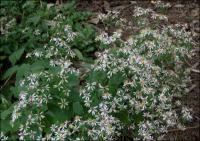Description
Loose white flower clusters from August to October
Loose white flower clusters from August to October
Loose white flower clusters from August to October
Golden daisies waive at the sun from July to September, its cup shaped leaves hold water where butterflies drink & bathe
Can not ship to: Connecticut and New York
Size: 7’ x 3’
Care: full sun to part shade in moist soil
Native: Central North America, native to Wisconsin.
Awards: England’s Royal Horticultural Society Award of Merit
Sap used by Native Americans to chew and freshen breath. Also used to cure colds, neuralgia, fever, and liver disorders. The Chippewa used to stop lung hemorrhaging, menstrual bleeding and cure chest pain. The Winnebago drank a potion from the plant to purify themselves before a buffalo hunt. For the Iroquois it cured paralysis, prevented children from seeing ghosts and illness caused by the dead. Lakota Sioux: “Children sometimes use the resin as chewing gum. An infusion of the whole plant is used to rid horses and humans of intestinal worms. An infusion of the leaves is used to loosen phlegm in the lungs. Described and classified in 1753.
OUT OF STOCK
Atop a mound of spatula-shaped, crinkled leaves with scalloped edges rises a bounty of 4 to 5 inch tall spikes, each crowned with a hoard of tiny fuchsia-colored trumpets blowing their horns “look at me” in early to mid-summer.
Size: 4-8" x 8-12" spreading slowly by rhizomes
Care: sun to part shade in moist well-drained soil
Native: South Africa
Wildlife Value: Deer resistant. Attracts small bees and butterflies
English adventurer and naturalist William John Burchell (1781-1863) scoured South Africa from 1803 to 1815 collecting more than 50,000 specimens packed in 48 crates. In places unexplored he found insects, animals, fish and unknown plants, this being one. Although he published two volumes of his exploration, he did not finish the last, third volume, leaving another to write the botany. Premier English botanist George Bentham (1800-1884) took up the task authoring Labiatarum Genera et Species, published in 1834. He wrote the first published description and named this tiny plant with outsized charm.
Profusion of small classic daisies May-July atop fragrant silver foliage. Cut back for rebloom. Let the seeds drop for more plants next year. If you cut them back after the 1st flowering they will rebloom for most of the summer and fall.
Size: 2’ x 3’
Care: sun in moist well drained soil
Native: central & southern Europe
Named by Carl Heinrich Schultz (1805-1867)
Balloon shaped buds opening to white bells in mid-summer to early fall.
Size: 24" x 12"
Care: Full sun to part shade in moist well-drained soil. Heat and drought tolerant. Deadhead for rebloom.
Native: Eastern Asia
Wildlife Value: attracts hummingbirds, bees & butterflies
Awards: England's Royal Horticultural Society Award of Garden Merit.
Platycodon is Greek from platys meaning “broad” and kodon meaning “bell”, referring to the shape of the flower. Cultivated in China for hundreds of years where it is called Jie-geng. Chinese used the root boiled to cure a chill in the stomach. Mentioned in Man’yoshu, a Japanese anthology of poems written in the 8th century. German botanist Johann Gmelin (1709-1755) collected P. grandiflorus in Siberia in 1754. Gmelin’s Siberian mission, sponsored by Catherine the Great, took 10 years and nearly killed him. Gmelin introduced it to European garden cultivation by 1782. Robert Fortune found the white form in a nursery near Shanghai and sent it to England in 1845.

